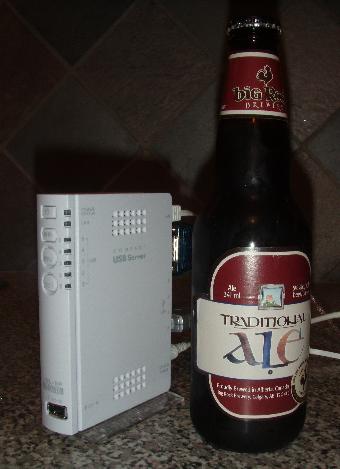
 OpenBSD/landisk runs on machines related to the
IO-DATA USL-5P, using a
Hitachi/Renesas
SH-4 CPU.
OpenBSD/landisk runs on machines related to the
IO-DATA USL-5P, using a
Hitachi/Renesas
SH-4 CPU.OpenBSD/landisk is the 1st OpenBSD port to a Hitachi/Renesas SH-4 based machine. It is hoped that other SH-4 based machines will show up which are interesting enough for our user and development community, but the SH-4 processor is normally used only in true embedded products. This processor architecture is the first 32-bit sucessor of a series of extremely bizarre 8 and 16 bit processors by Hitachi. It has a very strange instruction set and MMU, and developers find it quite a challenge to map their knowledge of Unix low-level ideas to the processor architecture.
Hardware support is mostly complete and quite stable.
The latest supported OpenBSD/landisk release is OpenBSD 5.4. Here are the OpenBSD/landisk 5.4 installation instructions .
Snapshots are made available from time to time, in
this location
as well as in a few
mirrors.
Here are the
OpenBSD/landisk snapshot installation instructions
as well.

The IO-DATA cable converts from a DB9 connector to a 5-pin header (3.3V Tx Rx GND NC). Note that the Rx and Tx pins on the board are swapped compared to the ARM-based machines made by IO-DATA. All the board models have a 5-pin connector (called CN7) which the cable can plug into -- except for the USL-5P which has a 4-pin header (thus requiring removal of the spare pin).
A USL-5P is shown with a modified IO-DATA cable. In this case the cable
has been shortened significantly and the DB9 connector is glued into a slot
carefully cut into the plastic between the ethernet and a USB port.